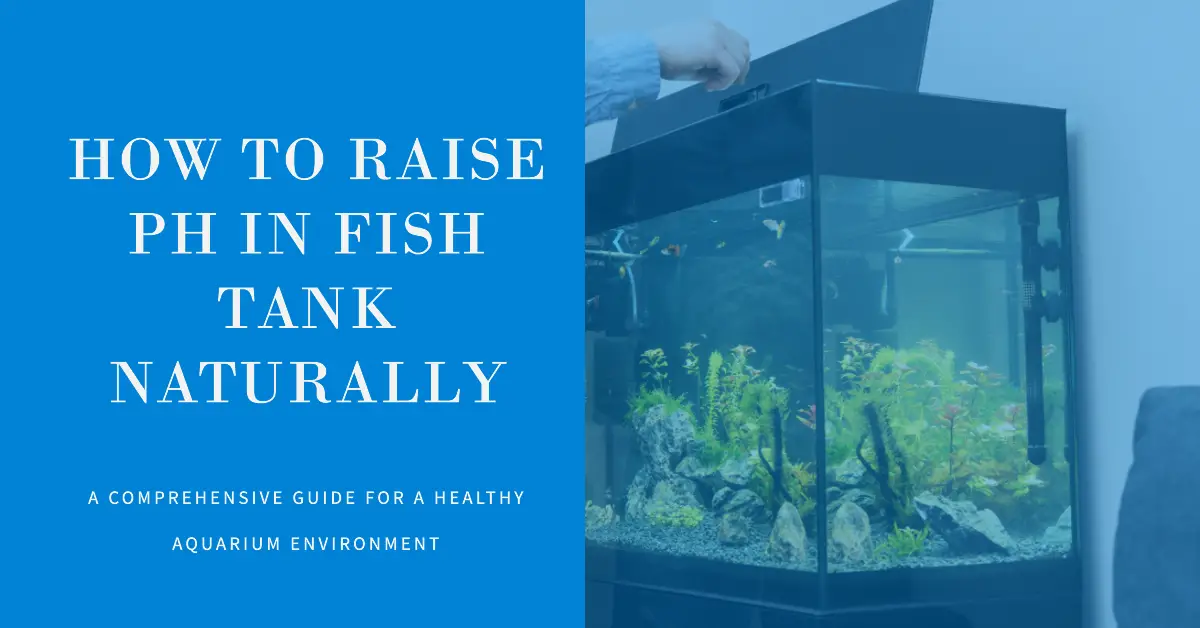Last Updated on March 23, 2023 by cmoarz
Creating and maintaining the ideal environment for your fish and aquatic plants is a key aspect of successful aquarium keeping. One of the most important factors to consider is the pH level of the water, which can directly impact the health of the inhabitants. In this comprehensive guide, we will explore natural ways to raise the pH in your fish tank without using chemicals, ensuring a balanced and thriving ecosystem for your aquatic pets.

Understanding pH Levels in Aquariums
Table of Contents
The importance of pH balance
The pH level in your aquarium is a measure of the acidity or alkalinity of the water. It ranges from 0 (highly acidic) to 14 (highly alkaline), with 7 being neutral. Fish and other aquatic organisms have specific pH requirements, and maintaining the right pH range is crucial for their overall health and well-being.
Factors that contribute to low pH in fish tanks
- Acidic tap water: The source of your tap water can directly affect the pH level in your fish tank. Always test the pH of the tap water and adjust it as needed before adding it to your aquarium.
- Fish waste and uneaten food: As fish waste and uneaten food decompose in your aquarium, they produce acidic by-products that can lower the pH level of the water.
- Tannins from driftwood and other decorations: Driftwood, leaves, and other natural decorations can release tannins into the water, which can contribute to a lower pH.

Natural Methods for Raising pH in Your Fish Tank A. Regular water changes
Performing regular water changes is an essential practice for maintaining a stable and healthy pH level in your aquarium. Be sure to test the pH of your tap water before using it for water changes and use a water conditioner to neutralize harmful chemicals.
Using baking soda
Baking soda, or sodium bicarbonate, is a natural and safe way to gradually increase the pH level in your aquarium. Add 1 teaspoon of baking soda per 5 gallons of water, making sure to dissolve it in a separate container of water before pouring it into the tank to avoid stressing your fish.
Incorporating crushed coral or aragonite sand
Crushed coral and aragonite sand are both effective natural ways to raise the pH in your fish tank. Place the chosen material in a mesh bag and add it to your aquarium. Over time, these materials will slowly dissolve, releasing minerals that help increase the pH level.
Enhancing aeration and water flow
Improving aeration and water flow in your aquarium can help raise the pH level. By increasing water movement, you facilitate the release of carbon dioxide, which when dissolved in water, can contribute to a lower pH.
Adjusting driftwood and decorations
If driftwood, leaves, or other decorations are releasing tannins and causing low pH, consider reducing the number of these items in your aquarium or replacing them with alternative decorations that do not lower the pH.

Monitoring and Adjusting pH Levels for Optimal Fish Health
Utilizing test kits and strips
It is essential to test the pH level in your fish tank regularly using a reliable test kit or test strips. This allows you to monitor any changes in the pH level and make adjustments as needed to maintain the ideal environment for your fish.
Gradual changes for stress-free acclimation
When making adjustments to the pH level in your aquarium, it is crucial to do so gradually. Sudden changes can cause stress to your fish, potentially leading to health issues. Always make changes slowly and over time, allowing your fish to acclimate to the new conditions without experiencing undue stress.
Species-specific pH requirements
Keep in mind that different fish species have unique pH requirements for optimal health. Research the specific needs of the fish in your aquarium and adjust the pH accordingly to cater to their preferences. If you have a diverse community of fish with varying pH needs, aim for a balance that accommodates the majority of your fish without causing harm to the others.
Maintaining water quality and pH stability
In addition to adjusting the pH level, it is vital to maintain overall water quality in your aquarium. Regular water changes, proper filtration, and consistent monitoring of water parameters will help ensure a healthy environment for your fish and other aquatic inhabitants.

Conclusion
Raising the pH in your fish tank naturally is not only achievable but also beneficial for the overall health and well-being of your aquarium’s inhabitants. By employing methods such as regular water changes, using baking soda, incorporating crushed coral or aragonite sand, enhancing aeration and water flow, and adjusting decorations, you can create a balanced, thriving environment for your fish. Regular monitoring and maintenance of water quality will further ensure a stable and healthy aquarium for all its residents.
About
Owner of AquariumGravel.com and also owner of actual Aquarium Gravel believe it or not! ;). Setting up beautiful aquarium sceneries and habitats since I was very young. Enjoy!
- Web |
- More Posts(290)

